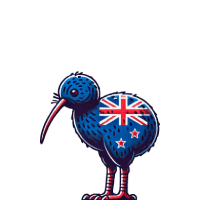The exact appearance of parasitoid wasps depends on the species. Most are extremely small (1 to 10 mm) and have brown or black bodies with long, thin antennae. However, some species belonging to the family Ichneumonidae can be over 10 cm (4 inches) long and have a very long ovipositor…
Featured Post
Taxonomy and Species Diversity
Taxonomy of the Parasitoid wasps of New Zealand
New Zealand, known for its unique biodiversity, is home to many endemic species, including parasitoid wasps. These insects play a…
Variety of wasps
Parasitoid wasps seem to be more diverse than expected. Beetles have long been the “official” insect order with the largest…
Predators and parasites
To most people, parasitic wasps are invisible. Their life cycle is quite remarkable, but they remain almost unknown outside the…
Evolutionary Adaptations of Parasitoid wasps of New Zealand
New Zealand, with its unique flora and fauna, is an interesting site for studying evolutionary processes occurring in isolated ecosystems.…
Blog
The Role of Wasps in Pollination vs. Pest Control
When thinking of wasps, most people picture an annoying, stinging insect to avoid. However, these misunderstood creatures play a crucial role in ecosystems worldwide. Wasps are not only efficient predators […]
Read MoreHow to Attract Beneficial Wasps to Your Garden
Wasps often get a bad reputation due to their stingers and occasional aggression, but they are incredibly valuable to gardeners. Beneficial wasps help control pests naturally and even assist in […]
Read MoreBenefits of Using Wasps as Pest Controllers
What do we know about wasps? It’s a question we hear more often than not. We aren’t talking about Wasp Solitaire now. We leave this popular game for entertainment at […]
Read MoreClimate Change and its Impact on Parasitoid Wasps
Changing climatic conditions are having a significant impact on ecosystems around the world, and parasitoid wasps are no exception. These insects, which play a key role in regulating pest populations […]
Read More






